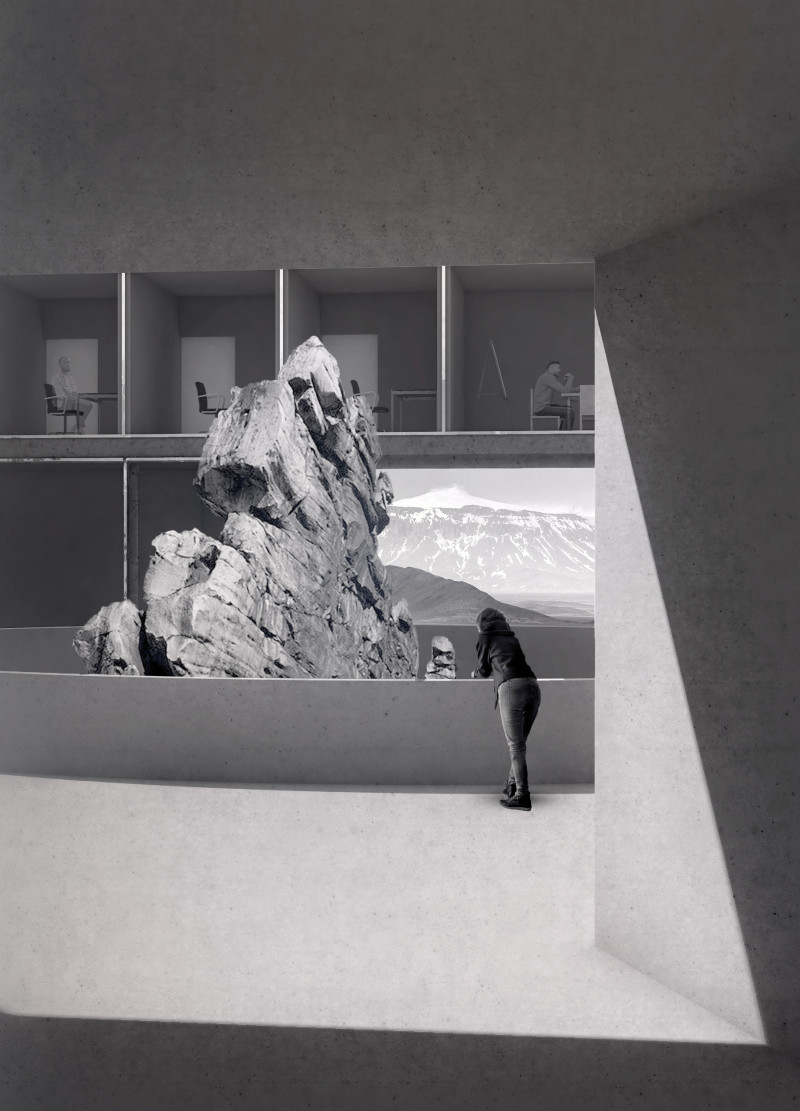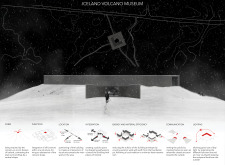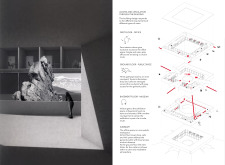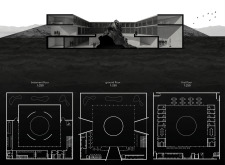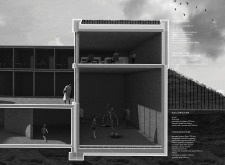5 key facts about this project
At the heart of this architectural project lies its multifunctional purpose. Designed to accommodate a diverse range of activities, the building integrates spaces for work, leisure, and communal gatherings. The architects have skillfully delineated areas that cater to individual needs while fostering social connectivity. Open floor plans and flexible layouts allow for adaptability, accommodating both planned activities and spontaneous interactions. This versatility is one of the key strengths of the design, illustrating a profound understanding of contemporary lifestyle demands.
The materiality of the project plays a critical role in shaping its identity. A careful selection of local and sustainable materials underscores the architects' commitment to environmental responsibility and community integration. Elements such as recycled wood, rammed earth, and sustainably sourced concrete are meticulously employed throughout the structure, not only enhancing its ecological footprint but also establishing a sense of place. These materials contribute to the building's thermal performance and durability while providing an inviting texture that resonates with the surrounding environment.
In addition to function and materiality, the architectural design demonstrates a keen awareness of the site’s contextual landscape. The integration of lush green terraces and rooftop gardens highlights the importance of biophilic design elements. These features not only enhance the aesthetic quality of the structure but also contribute to the overall well-being of its occupants by promoting access to nature within an urban context. The design effectively blurs the boundaries between indoor and outdoor spaces, inviting natural light and ventilation to permeate every corner of the building.
Unique design approaches are evident in the way the building interacts with its surroundings. Large windows framed with sustainable timber provide panoramic views of the urban landscape while allowing for natural light to flood the interior, reducing the need for artificial lighting. The architects have embraced passive design principles, such as optimized orientation and shading devices, to minimize energy consumption. This approach reflects a thoughtful consideration of environmental sustainability and a commitment to creating a building that is in harmony with its setting.
The architectural plans reveal the intricate layering of spaces, each with its own character and purpose. The design facilitates movement and flow, ensuring that users can navigate the building intuitively. Key focal points, such as communal gathering areas and quiet retreats, have been strategically placed to encourage social engagement while providing spaces for reflection. Architectural sections highlight the relationship between different levels, showcasing how vertical circulation is seamlessly integrated into the overall design.
The overall aesthetics of the project are grounded in simplicity and clarity. The clean lines and careful proportions create a sense of balance and cohesion that resonates throughout. The architects have avoided unnecessary ornamentation, choosing instead to let the materials tell the story of the building. This minimalist approach not only enhances the building’s timeless appeal but also allows it to adapt to its environment over time.
This architectural design project stands as a testament to modern living, addressing the complexities of urban life while providing a welcoming space that fosters community and connection. It is an invitation to reimagine how spaces can be utilized, encouraging occupants to engage with their environment in meaningful ways. To fully appreciate the depth of this project, readers are encouraged to explore the architectural plans, sections, and detailed designs that exhibit the thoughtful ideation behind this remarkable structure. Each element is a crucial part of the overall narrative, contributing to a holistic understanding of the architectural intentions and methodologies employed.


